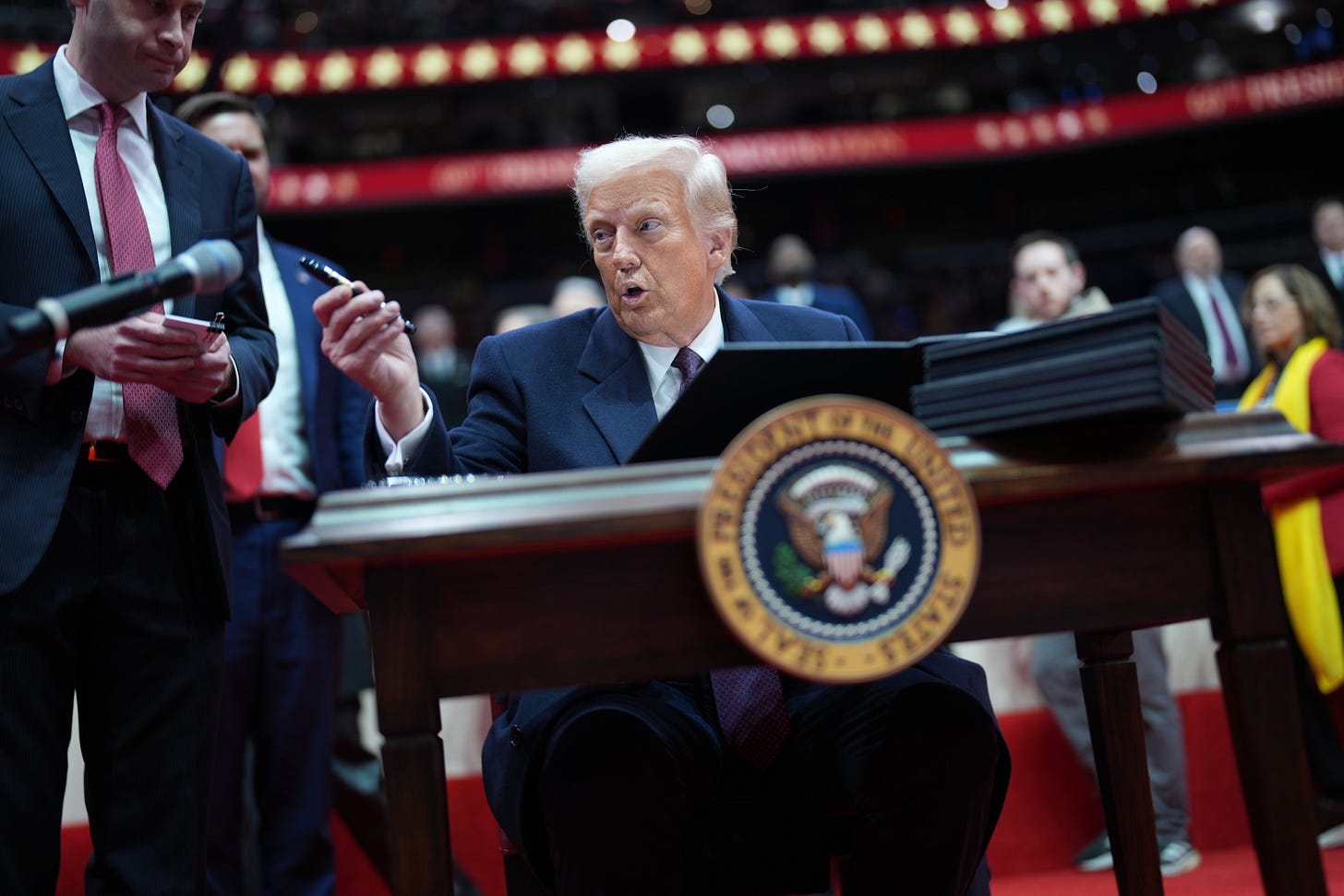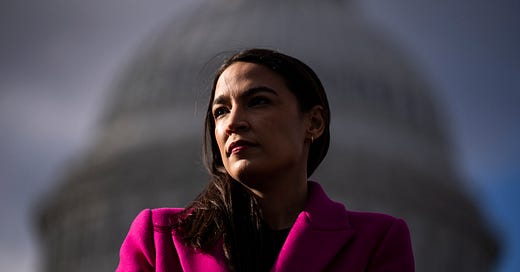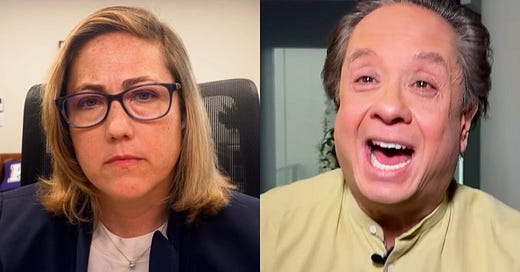
In High-Speed Power Grab, Trump Seeks to Remake the Federal Government
Bending and breaking the law to fire and disempower bureaucrats.

THE SHEER SPEED AND HUGE NUMBER of actions taken by the Trump administration in its first week has left journalists and commentators breathless and bewildered. It’s as if Trump has dumped the pieces of the world’s biggest jigsaw puzzle across the streets of Washington: Everyone is chasing around the individual pieces, while only the Trump team has a sense of how all the pieces fit together.
So while journalists and commentators are looking at the administration’s freeze on all federal grants, including medical research funds; shutdown of communication from scientific and public health agencies; firing of inspectors general; purging of DEI activities and personnel from the government and universities; and launch of migrant deportations, the Trump team already knows what they want it to look like—they’ve seen the picture on the outside of the box.
Of course, this isn’t Trump’s handiwork; there is no evidence that he has thought deeply about the policy, law, or constitutional questions at stake. But people who work for him have planned on his behalf over the last four years out of power. Among these is Russell Vought, Trump’s nominee to head the Office of Management and Budget, who founded one of several MAGA-friendly think tanks in Washington, the Center for Renewing America, and who contributed to Project 2025. Vought is a zealot among zealots, as his perfervid contribution to Project 2025 makes clear: “Nothing less than the survival of self-governance in America is at stake.”
Still, it’s possible to begin to see how the puzzle is coming together, the larger ambitions behind Trump’s actions, and what they mean in the context of our constitutional system. So let’s take a closer look at a few of his actions and how they have been executed.
First, consider the dismantling of the federal government’s DEI programs, which Trump ordered on January 21. The administration concluded that the easiest way was to rid the government of the federal officials working on DEI, but federal civil service rules prohibit simply firing people.
So, late on January 20, the acting director of the Office of Personnel Management (OPM)—essentially the federal government’s human resources department, now reportedly stuffed with Elon Musk loyalists—sent out a memo to federal department heads with instructions on how to put federal employees on paid leave and squeeze them out of the action. That’s something that very few people normally would pay attention to.
But then, on January 22, the administration announced that it was shutting down federal DEI operations and laying off all the employees connected with DEI. The expansive interpretation of the government’s paid-leave policy gave the Trumpistas just the power they needed.
So the administration laid the foundation by creating a reduction-in-force process that didn’t previously exist, and then promptly used it to kill DEI.
Then there’s DOGE, the Elon Musk-led “Department of Government Efficiency” (technically now the “DOGE Service”), which Trump ordered to dispatch teams into every federal agency. Where could it quickly recruit a small army of loyalists? OPM took the standard memo that’s sent to agencies with every presidential transition about getting help from short-term political appointees, and then made a crucial change: It lifted the caps usually in place to limit the number of such appointees and permitted the Trump team to flood the bureaucracy with an unlimited number of political appointees. So DOGE launched on the heels of a plan to mold government in MAGA’s image and likeness.
More: After Trump’s first four years in office, his team was deeply suspicious of the permanent bureaucracy, especially the members of the Senior Executive Service, a cadre of about 8,000 of the government’s most experienced managers. So the administration distributed a memo on January 20 asserting that because “officials wield significant governmental authority, they must serve at the pleasure of the President.”
With those 14 words, the administration blew up 140 years of consensus, across the political parties, about the need for a technically expert, politically accountable civil service. SES members became, in the president’s view, at-will employees without civil service protection, who could be fired for any reason. Promptly following Trump’s inauguration, his administration started using the power it had asserted. And in case anyone missed the point, a memo from OPM on January 27 said that anyone involved in shaping policy is “required to faithfully implement administration policies to the best of their ability, consistent with their constitutional oath and the vesting of executive authority solely in the President.” That is, the president has sole power to determine who does what in the executive branch. And then: “Failure to do so is grounds for dismissal.”
Finally, there is the email reportedly sent from OPM to every federal worker tonight—reading very much like a memo drafted by Musk and his hires—purporting to offer them what amounts to a buyout. Details about this “deferred resignation program,” including about how it would be funded, will likely emerge in the next few days. If even just a fraction of the federal workforce takes the offer, it could represent the biggest rapid remaking of the federal bureaucracy since the Second World War. And those departed federal workers would likely be replaced by new hires who feel loyalty to Donald Trump.
YOU MAY SEE ARTICLES arguing that one action or another action taken by Trump resembles something that a previous administration did. That totally, completely misses what’s happening. The Trump restoration is simply unlike anything that we’ve ever seen before.
It’s singularly, startlingly focused on increasing the president’s power, by its reading of Article II of the Constitution and the most far-reaching implementation of the “unitary executive” theory that’s become popular in conservative legal circles over the last forty years. And (to mix metaphors) it’s operating from a playbook that none of us knows, to make the pieces come together into a picture that the rest of us can only imagine.
It’s a powerful strategy, designed not only to boost Trump’s policy plans but also to transform governance. It’s happening with a speed intended to overwhelm lawmakers, watchdog groups, journalists, and the public. Careful vigilance and swift action in the courts are called for—before it’s too late.
















